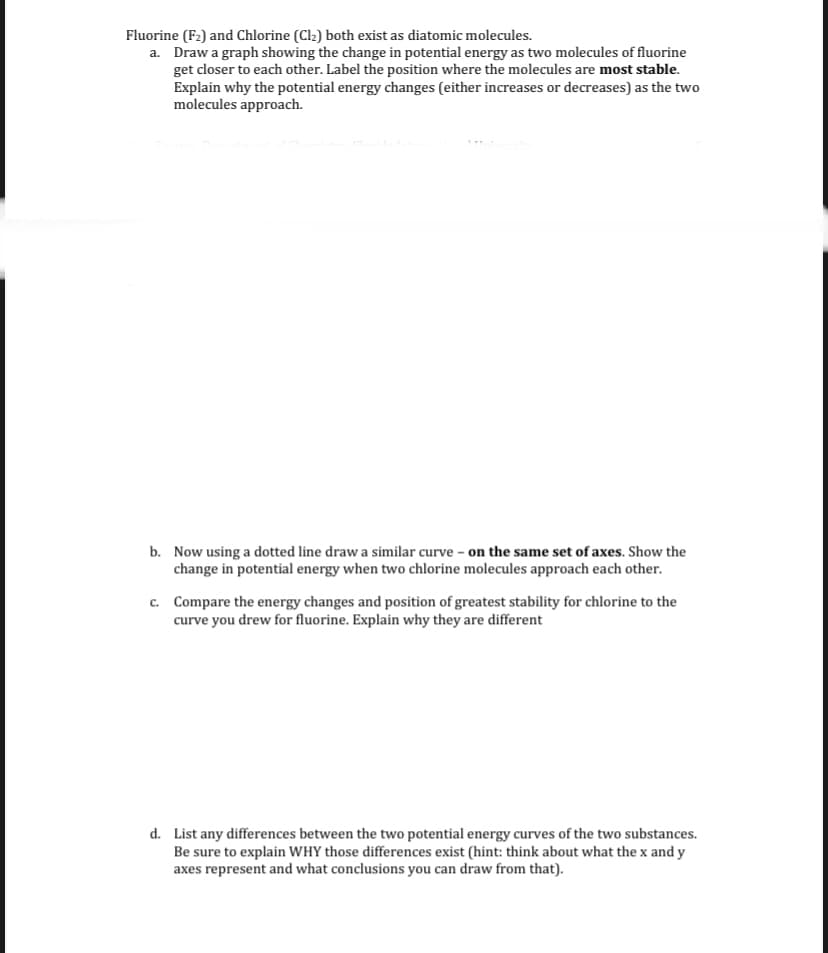Fluorine (F₂) and Chlorine (Cl₂) both exist as diatomic molecules. a. Draw a graph showing the change in potential energy as two molecules of fluorine get closer to each other. Label the position where the molecules are most stable. Explain why the potential energy changes (either increases or decreases) as the two molecules approach. b. Now using a dotted line draw a similar curve - on the same set of axes. Show the change in potential energy when two chlorine molecules approach each other. c. Compare the energy changes and position of greatest stability for chlorine to the curve you drew for fluorine. Explain why they are different
Types of Chemical Bonds
The attractive force which has the ability of holding various constituent elements like atoms, ions, molecules, etc. together in different chemical species is termed as a chemical bond. Chemical compounds are dependent on the strength of chemical bonds between its constituents. Stronger the chemical bond, more will be the stability in the chemical compounds. Hence, it can be said that bonding defines the stability of chemical compounds.
Polarizability In Organic Chemistry
Polarizability refers to the ability of an atom/molecule to distort the electron cloud of neighboring species towards itself and the process of distortion of electron cloud is known as polarization.
Coordinate Covalent Bonds
A coordinate covalent bond is also known as a dative bond, which is a type of covalent bond. It is formed between two atoms, where the two electrons required to form the bond come from the same atom resulting in a semi-polar bond. The study of coordinate covalent bond or dative bond is important to know about the special type of bonding that leads to different properties. Since covalent compounds are non-polar whereas coordinate bonds results always in polar compounds due to charge separation.

Trending now
This is a popular solution!
Step by step
Solved in 4 steps with 1 images









